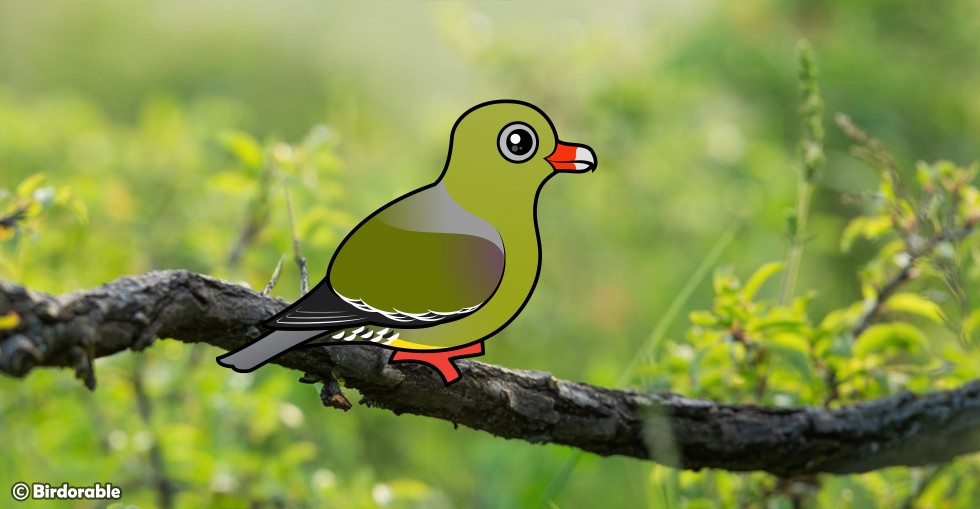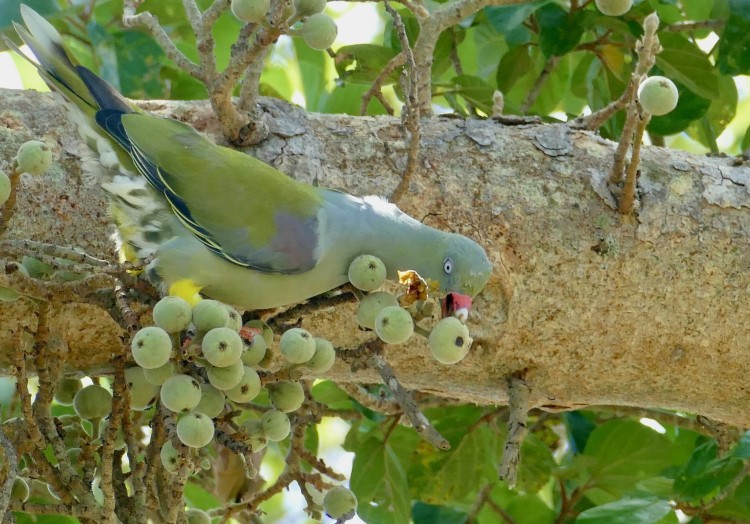Fruit Acrobats and Forest Farmers: Interesting Secrets of the African Green Pigeon

The African Green Pigeon might not be the flashiest bird in the jungle, but it packs a surprising punch of interesting features that make it a worthy feathered friend. Here's why you should appreciate this darling green gem:
Masters of Camouflage
Their olive-green plumage blends seamlessly into foliage, making African Green Pigeons virtually invisible to predators. They also move clumsily on branches, further mimicking leaves swaying in the wind. This stealthy tactic allows them to feast on fruits and berries undisturbed, leaving them as elusive as forest phantoms.
Nomadic Frugivores
African Green Pigeons aren't content with monotonous meals. They search for fruiting trees across vast distances, forming nomadic groups as they travel from feast to feast. Their flexible diet lets them enjoy a variety of fruits, from bananas to papaya, mulberries, and peaches. They are especially fond of figs.
Fruity Acrobats
Unlike their seed-pecking cousins, African Green Pigeons have a unique way of accessing the sweet flesh inside fruits. They hang upside-down, like little green acrobats, and reach down to reach the fruit.

African Green Pigeon feeding on figs by Bernard DUPONT (CC BY-SA 2.0 Deed)
Vocal Variety
While they might not be operatic singers, African Green Pigeons possess a surprisingly diverse vocal repertoire -- they don't sound like more familiar pigeon species. From soft whistles and guttural growls to cackles and clicks, they use these sounds to communicate with each other, warning of predators, defending territories, and attracting mates.
Feathered Farmers
African Green Pigeons play a vital role in seed dispersal of fruit trees, contributing to the health and regeneration of the ecosystem. By consuming fruits, they carry seeds long distances, allowing new trees to sprout in remote locations. Think of them as forest gardeners, spreading the bounty of the jungle and ensuring its future.
The African Green Pigeon joined our Birdorable family on October 10, 2012.













Comments
Leave a comment
Thank you!